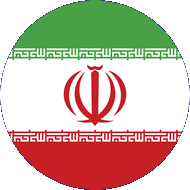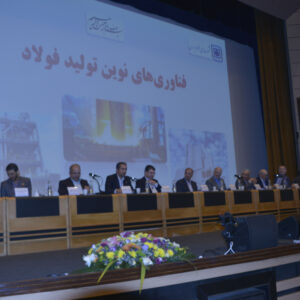Managing Director of National Iranian Steel Company expressed that the carbon dioxide production of the world steel industry in 2020 is equivalent to 3.7 gigatons.
Mohammad Aghajanloo, who spoke as a lecturer at the 25th Steel Symposium on “Green Steel Solutions” considered the iron-making process as the largest share of carbon dioxide emissions, and stated: “The steel industry’s share of carbon dioxide production is 8 percent of total global emissions.”
He pointed out the global steel production in 2020 to be equivalent to 1.85 billion tons, noting that the share of steel production from mine was 1400 million tons (76 percent) and the share of steel production from scrap was 450 million tons (24 percent).
Aghajanloo also added: “There are currently 25 billion tons of steel in the world, which has been converted into scrap at a certain rate and an average of 700 million tons of scrap is produced per year.
Managing director of National Iranian Steel Company regarding the steel production in 2050 stated: “It is predicted that 2.7 billion tons of steel will be produced in that year, with the share of steel production from mine 1400 million tons (equivalent to 52 percent) and the share of steel production from scrap 1300 million tons (equivalent to 48 percent).
He also added that in 2050 there will be 60 billion tons of steel in the world, more scrap use, lower energy consumption, environmental compliance and reduced minerals will cause steel production to develop towards the electric arc furnace.
Referring to the share of steel production methods in the world, Aghajanloo stated: In 2020, the share of the blast furnace was 65% and the share of the EAF was 35%, which is predicted in 2050 the share of the blast furnace 55% and the share of Electric arc furnace 45%, and in 2100 the share of blast furnace will be 40% and the share of EAF will be 60%.
Pointing out that 90% of the country’s steel production is done by the technology of midrex (pered)-arc furnace, he noted: In the near future, the production of sponge iron with 30% hydrogen will replace natural gas, and I also promise that Shadegan Steel Company, as the first steel unit in the country, will implement this project through hydrogen surplus of petrochemical units.
He also said that in the process of midrex or pered, it can also be achieved by absorbing carbon and reaching zero-carbon emissions.
Managing Director of National Iranian Steel Company regarding the types of hydrogen production methods said: Today, methane vapor reformulation is the most cost-effective process for hydrogen production, and the production of low-carbon hydrogen by pyrolysis of methane is significantly more competitive than electrochemical processes such as water electrolysis.
Referring to the expanding role of hydrogen in the future low-carbon energy economy, he added: “Hydrogen production from methane decomposition can be the most cost-effective technology of the transitional period and given the availability of natural gas in the country, methane pyrolysis can be exploited as a medium-term solution to reach green hydrogen by electrolysis.”
Mohammad Aghajanloo continued his speech by presenting strategies for green steel production and carbon reduction, stating :
For the short and medium term the following strategies can be effective:
Improve, upgrade and optimize the process.
Moving towards the Fourth Industrial Revolution and Smart Steel Production Chain.
Prediction the modifications needed for existing plants to replace hydrogen in the long term.
Using excess hydrogen in petrochemical and refinery industries as fuel or substitute for natural gas in direct reduction process.
Development of renewable electricity generation (construction of solar or wind power plant).
At the end of his speech, eng. Aghajanloo by stating medium and long-term strategies (according to Outlook 2030 of the Paris Agreement) added:
- Development of CO2 absorption method and its injection into oil and gas fields or underground salt layers
- Hydrogen production by pyrolysis of methane (by plasma or thermal method) due to the advantage of access to natural gas resources in the country and also lower electricity consumption than electrolysis method saving 85% electricity and producing a solid carbon byproduct.
- Monitoring the development of other technologies under development of hydrogen-based steelmaking such as: Hydrogen midrex, Hybrid, …. etc.
- Observation of developing steelmaking technologies such as electro-vining.
- Applying water electrolysis and hydrogen production after proper development of renewable energy sector.




